

Artificial intelligence model detects asymptomatic Covid-19 infections through cellphone-recorded coughs. Asymptomatic people who are infected with Covid-19 exhibit, by definition, no discernible physical symptoms of the disease.
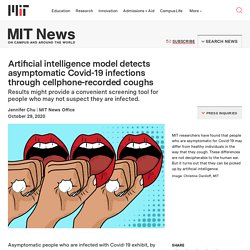
They are thus less likely to seek out testing for the virus, and could unknowingly spread the infection to others. But it seems those who are asymptomatic may not be entirely free of changes wrought by the virus. MIT researchers have now found that people who are asymptomatic may differ from healthy individuals in the way that they cough. These differences are not decipherable to the human ear. But it turns out that they can be picked up by artificial intelligence. In a paper published recently in the IEEE Journal of Engineering in Medicine and Biology, the team reports on an AI model that distinguishes asymptomatic people from healthy individuals through forced-cough recordings, which people voluntarily submitted through web browsers and devices such as cellphones and laptops. Subirana’s co-authors are Jordi Laguarta and Ferran Hueto, of MIT’s Auto-ID Laboratory.
This is what it will take to get us back outside. It could all be over more quickly if certain existing drugs, already known to be safe for other uses, prove effective in treating covid-19.
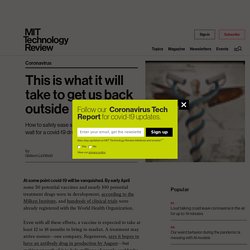
Trials are now under way; we should know by the summer. On the flip side, it may be that only a vaccine delivers the knockout blow, and even then, we still don’t know how long one will stay effective as the virus mutates. This is why everything feels unmoored and why everybody is stressed: because we can no longer predict what will be allowed and what will not a week, a month, or 12 months hence.
That means we have to prepare for a world in which there is no cure and no vaccine for a long time. There is a way to live in this world without staying permanently shut indoors. In recent weeks a consensus has started to build among various groups of experts on what this new normal might look like. This will entail a considerable degree of surveillance and social control, though there are ways to make it less intrusive than it has been in some countries.
Your biggest questions about coronavirus, answered. The coronavirus pandemic has only just begun.
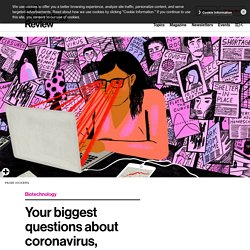
Everyone is trying to wrap their heads around what they need to know to protect themselves and their communities, and prepare for what’s next. Here are answers to some of the biggest questions our readers have about the outbreak, which we collected in a survey sent out through social media and other avenues. This post will stay live with more questions added to it (and, hopefully, some answers) as the outbreak progresses. Get in touch through this Google Form if you have any more questions, and we will do our best to answer them.
This post is part of our coverage of the coronavirus/Covid-19 outbreak, all of which is available for free. Modeling report on #COVID19 mitigation and suppression strategies. Don’t “Flatten the Curve,” squash it! You have all seen a version of this curve of COVID-19 case loads by now: Or this one: Or this, which made it even into the New York Times: Or this: There are many more.
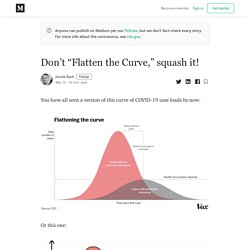
What all these diagrams have in common: They have no numbers on the axes. These suggestions are dangerously wrong, and if implemented, will lead to incredible suffering and hardship. What is the capacity of the healthcare system? When you didn't prep because prepping is for the paranoid. Risk of systemic healthcare failure due to #COVID19. How we must respond to the coronavirus pandemic [ TED Talk : Bill Gates ] And how to prepare for the next outbreak [ TED Talk : Alanna Shaikh ] Coronavirus Dashboard. Q&A on coronaviruses (COVID-19) Currently, there is not enough evidence for or against the use of masks (medical or other) in healthy individuals in the wider community.
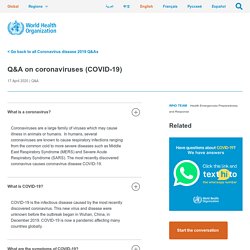
However, WHO is actively studying the rapidly evolving science on masks and continuously updates its guidance. Medical masks are recommended primarily in health care settings, but can be considered in other circumstances (see below). Medical masks should be combined with other key infection prevention and control measures such as hand hygiene and physical distancing. Healthcare workers Why? People who are sick and exhibiting symptoms of COVID-19 Why? Anyone taking care of a person at home who is sick with COVID-19. Daily situation reports by WHO.
Contagiousness. Sanitary Crisis. Covid-19 Vaccine. Containment. Consequences. Coronavirus disease 2019. Pandemic politics and naive exponential extrapolations.